ssp. occidentalis Sláma, 2017
Subfamilia: LAMIINAE / Tribus: MONOCHAMINI
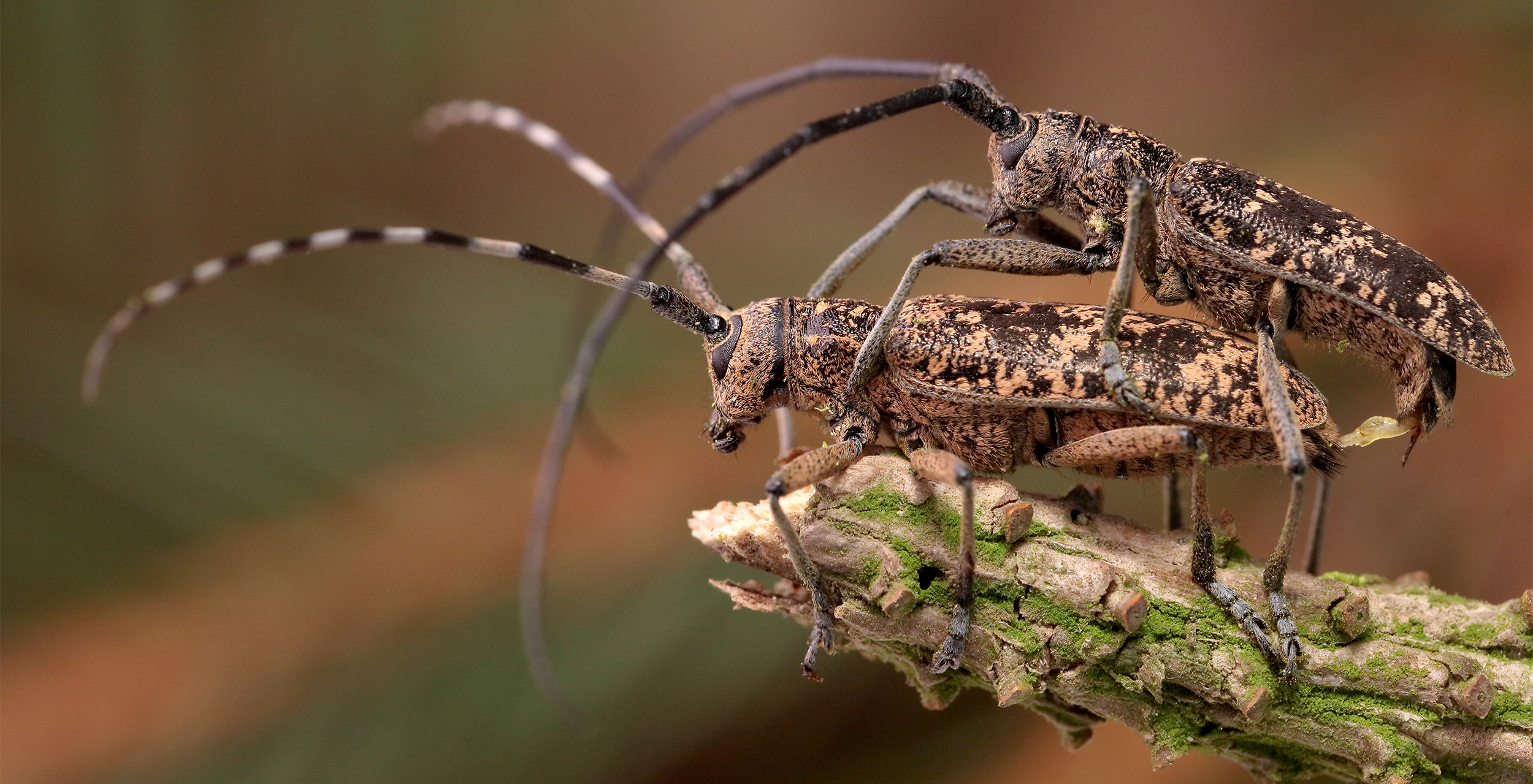
Monochamus (Monochamus) saltuarius occidentalis - couple [Photo © Milan Lovětínský]
Monochamus saltuarius, a widely distributed Euro-Asian taxon occuring from Atlantic ocean to Japan, has been descibed from Altai (Siberia, Russia) by Friedrich August Gebler in 1830 [✧]. Based on relatively significant differences between the adults of European and East Asian populations, Milan E. F. Sláma decided to divide (2017) the taxon M. saltuarius into two subspecies - the nominal Asian M. saltuarius saltuarius and European M. saltuarius occidentalis [❖]. In Central Europe, M. saltuarius has long been considered a very rare and local species, but in the last two decades, due to the mass dying of Norway spruces in the middle and lower elevations, it has become a common species in many localities.
Monochamus saltuarius occidentalis larvae develop in weakened, dying or freshly dead Norway spruces. Females lay eggs mainly on tree crowns and branches, the diameter of the infested material is from 2 to 6, exceptionally up to 12 cm. The young larvae feed subcortically, older enter the wood, where they continue in the feeding and create irregular gallery even deep across the infested wood. Larvae overwinter twice, then pupate in the pupal cells in the wood. The freshly hatched imago leaves the pupal cell via a straight exit corridor to the wood surface where it creates a typical circular exit hole (see the M. saltuarius occidentalis biology page). Life-cycle usually two years. Adults, active from late May to early August (with peak in June), can be found sitting on the fresh logs, felled or uprooted trees or crawling on trunks of standing dying trees. Adults also perform the maturity feeding on bark of fresh thin twigs [☆].
Body length: 11 - 22 mm Life cycle: 2 years Adults in: late May - early August Host plant: conifers, strongly prefers Norway spruce (Picea abies, rarely also on Pinus) Distribution: Austria, Belarus, Bosnia and Herzegovina, Croatia, Czechia, Germany, Hungary, Italy, Latvia, Lithuania, Poland, Romania, Russia, Slovakia, Slovenia, Ukraine
The depicted beetles were reared from a dead Norway spruce in Žihle environs (Plzeň-North district, Plzeň region, West Bohemia, Czechia) during winter 2021-2022.Collected by Miroslav Polcar
[✧]
Gebler F.A.:
Allgemeine Bemerkungen über die im Kolywan-Woskresenskischen Hüttenbezirke vorkommenden Insekten..
In Carl Friedrich von Ledebour: Reise durch das Altai-Gebirge und die songorische Kirgisen-Steppe 2 (3): 1-228, 1830. [download]
[❖]
Sláma M.E.F.:
A contribution to the recognition of two Longicorn species Cerambyx cerdo Linnaeus, 1758 and Monochamus saltuarius (Gebler, 1830) (Coleoptera, Cerambycidae).
Humanity space - International Almanac 6 (5): 933-938, 2017. [download]
[☆]
Sláma M.E.F.:
Tesaříkovití – Cerambycidae České republiky a Slovenské republiky / Cerambycidae of the Czech Republic and Slovak Republic.
Milan Sláma private printing, Krhanice, 383pp [pages 276-278], 1998 [ISBN: 80-238-2627-1]. [download]
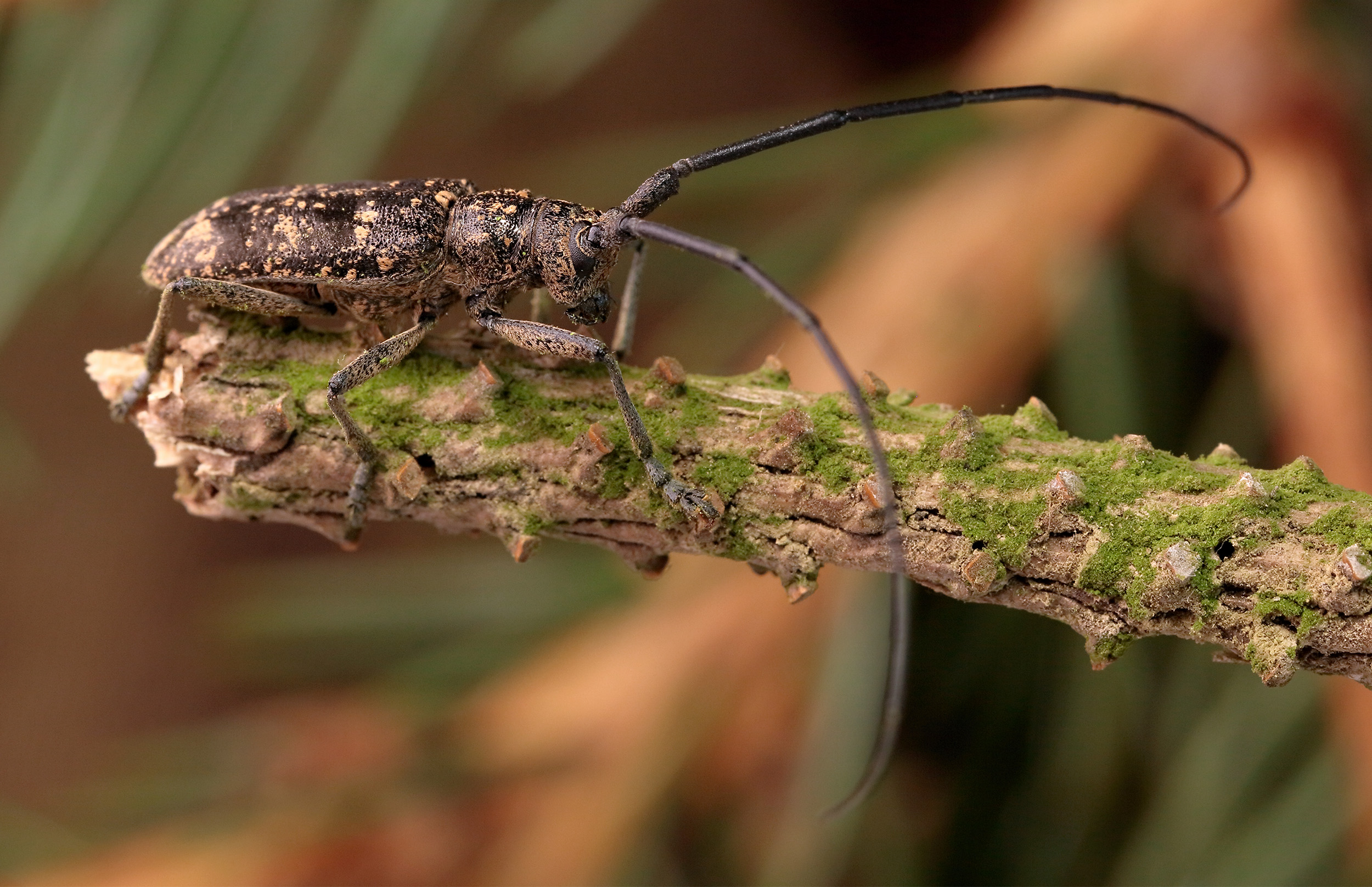
Monochamus (Monochamus) saltuarius occidentalis - ♂ [Photo © Milan Lovětínský]
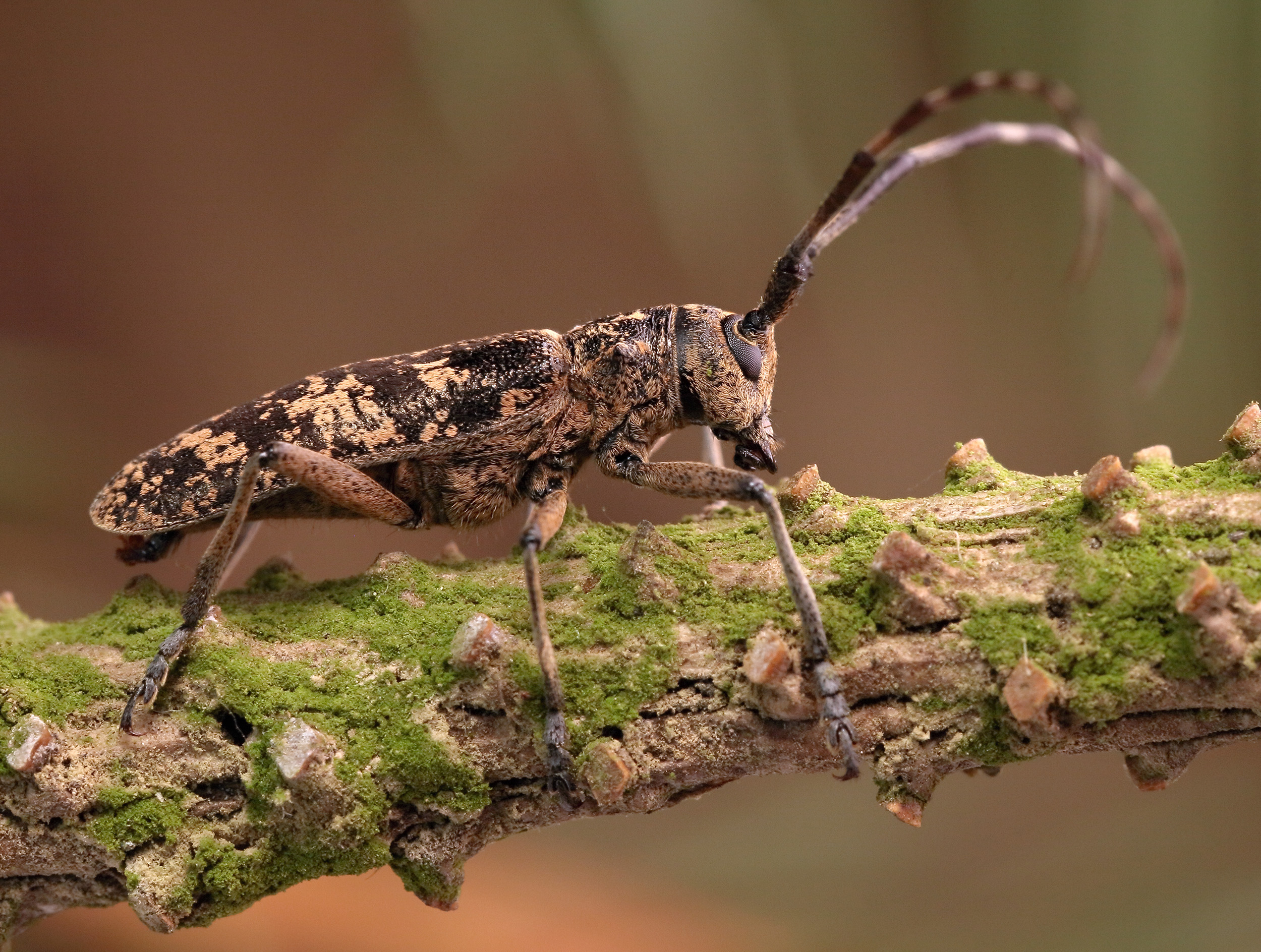
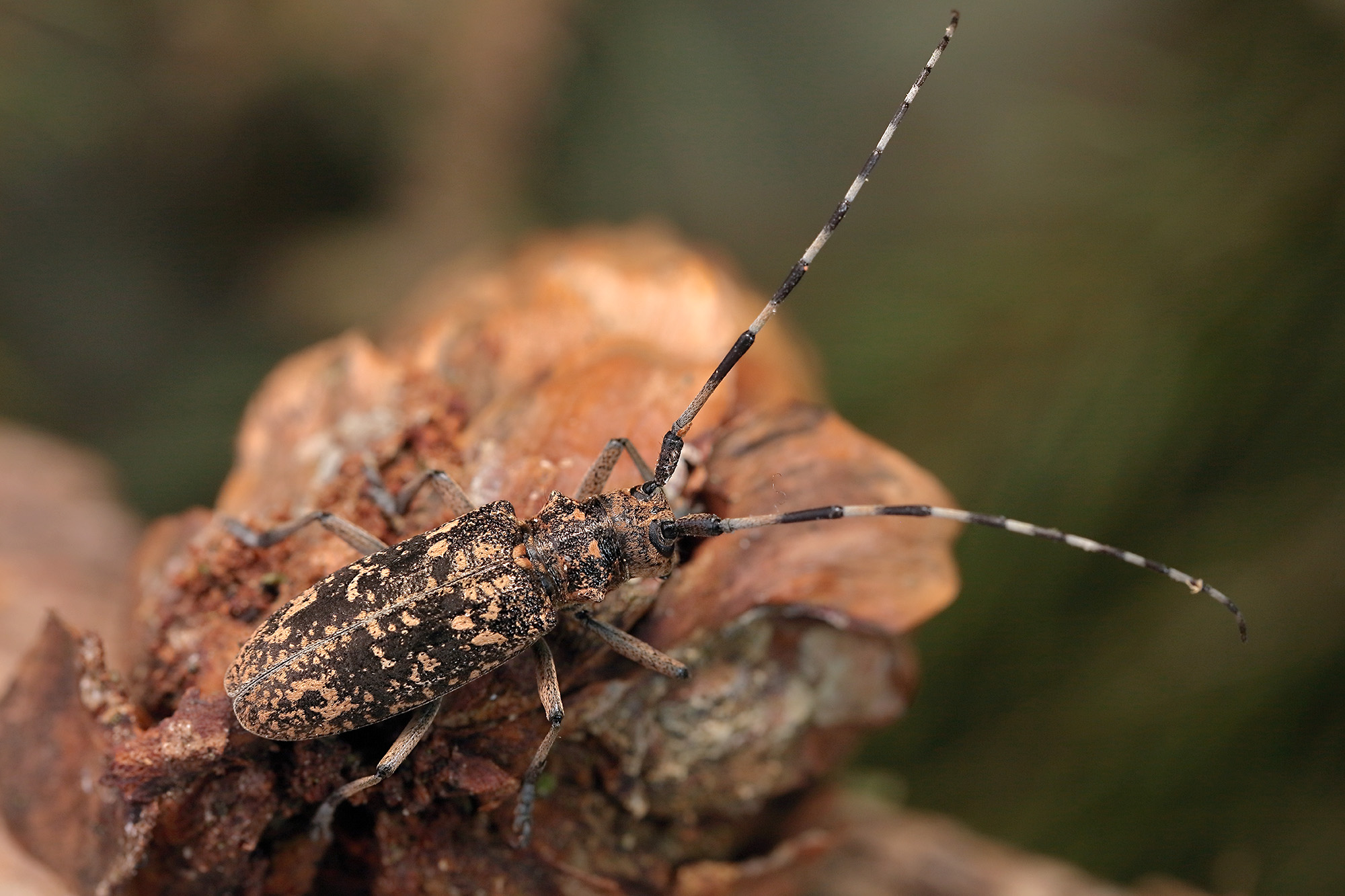
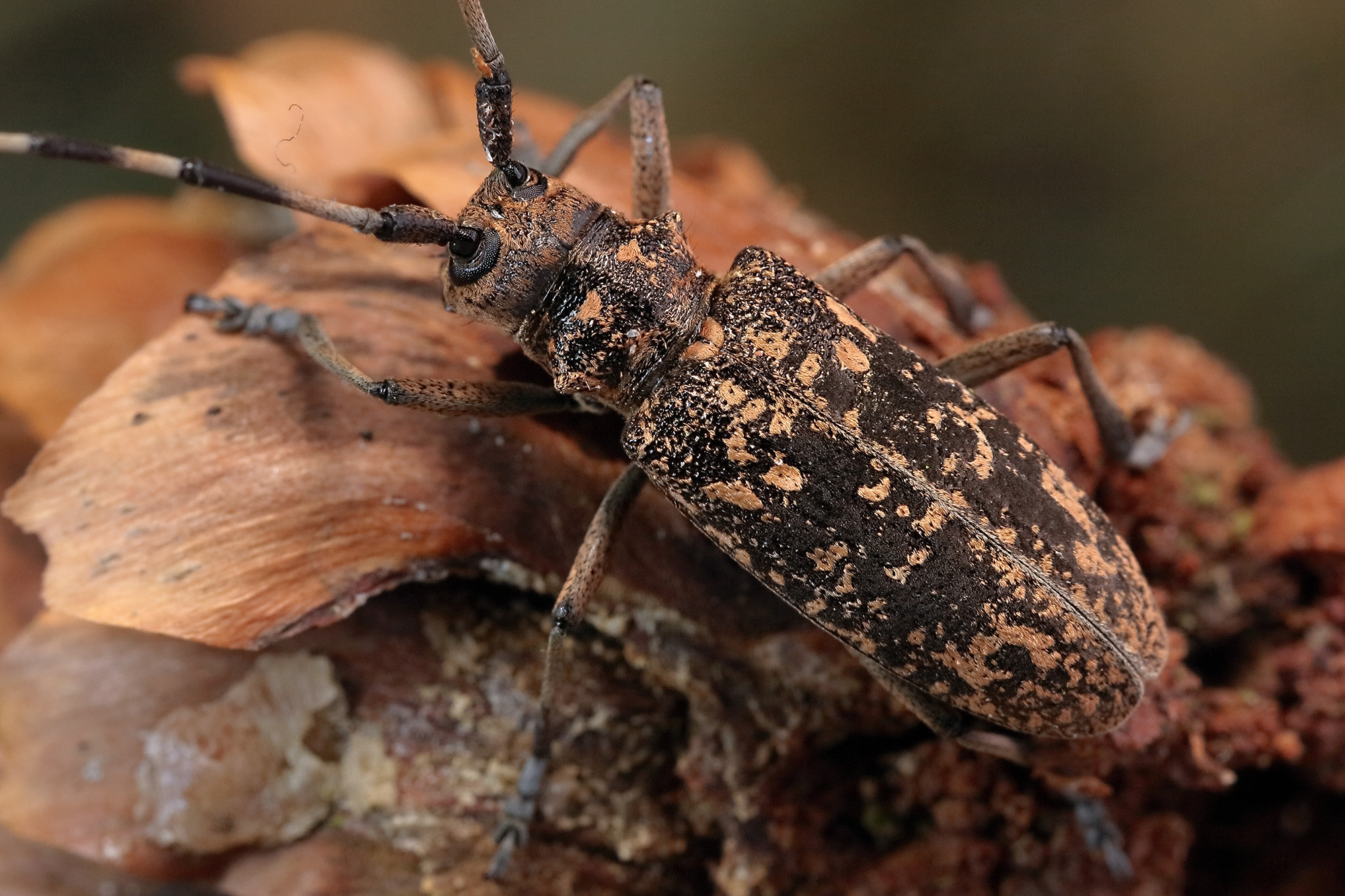
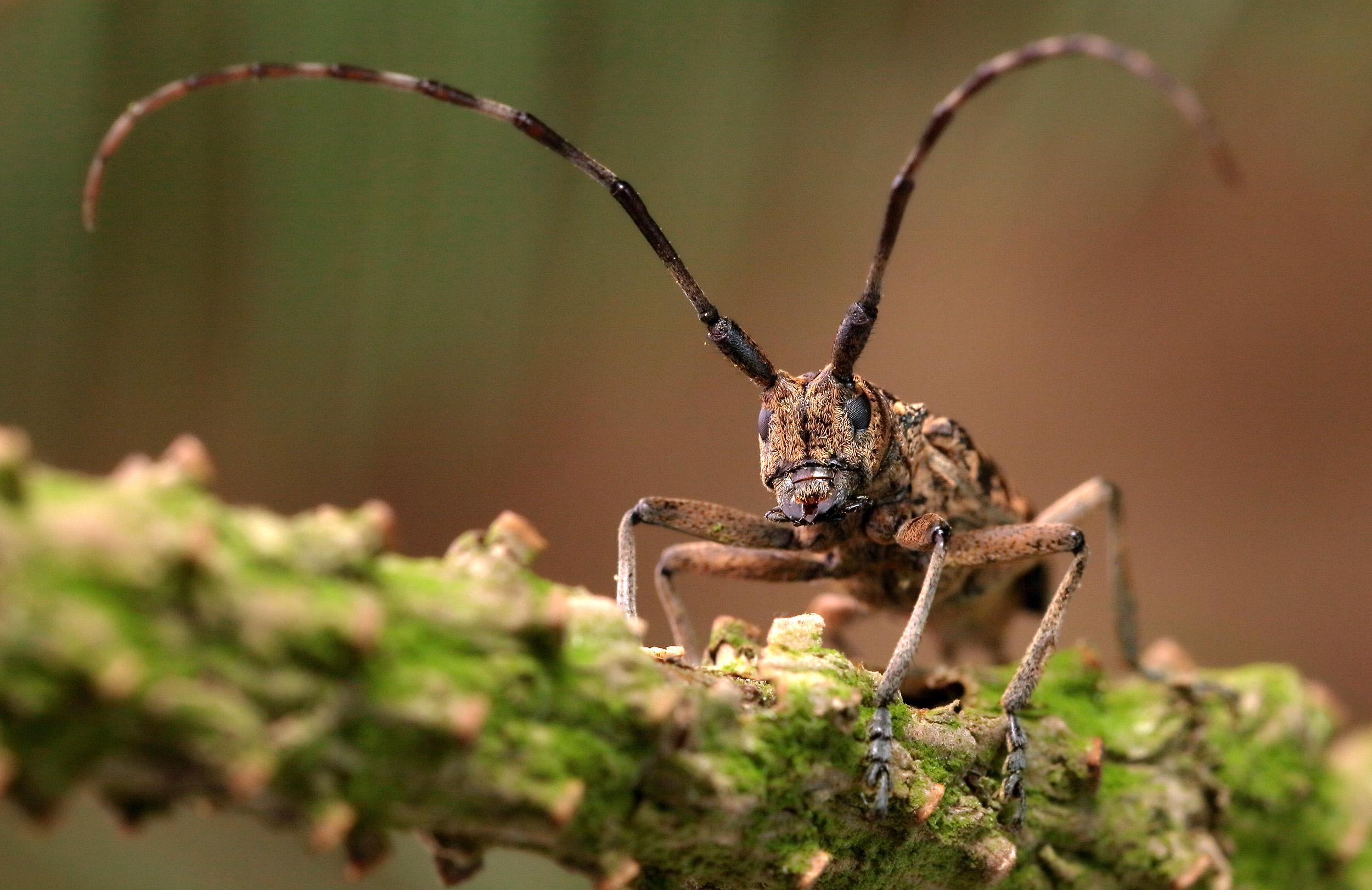
Monochamus (Monochamus) saltuarius occidentalis - ♀ [Photo © Milan Lovětínský]
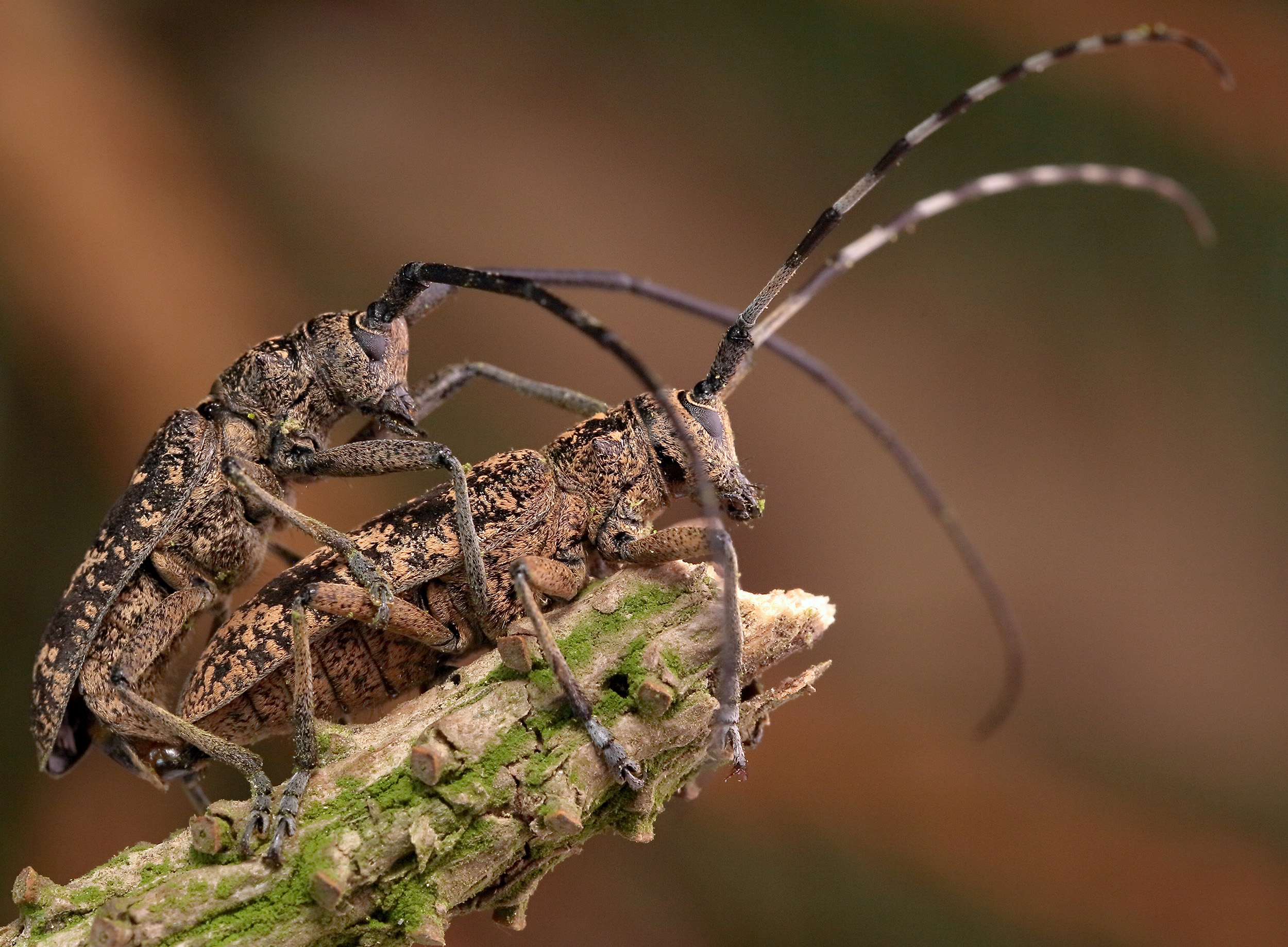
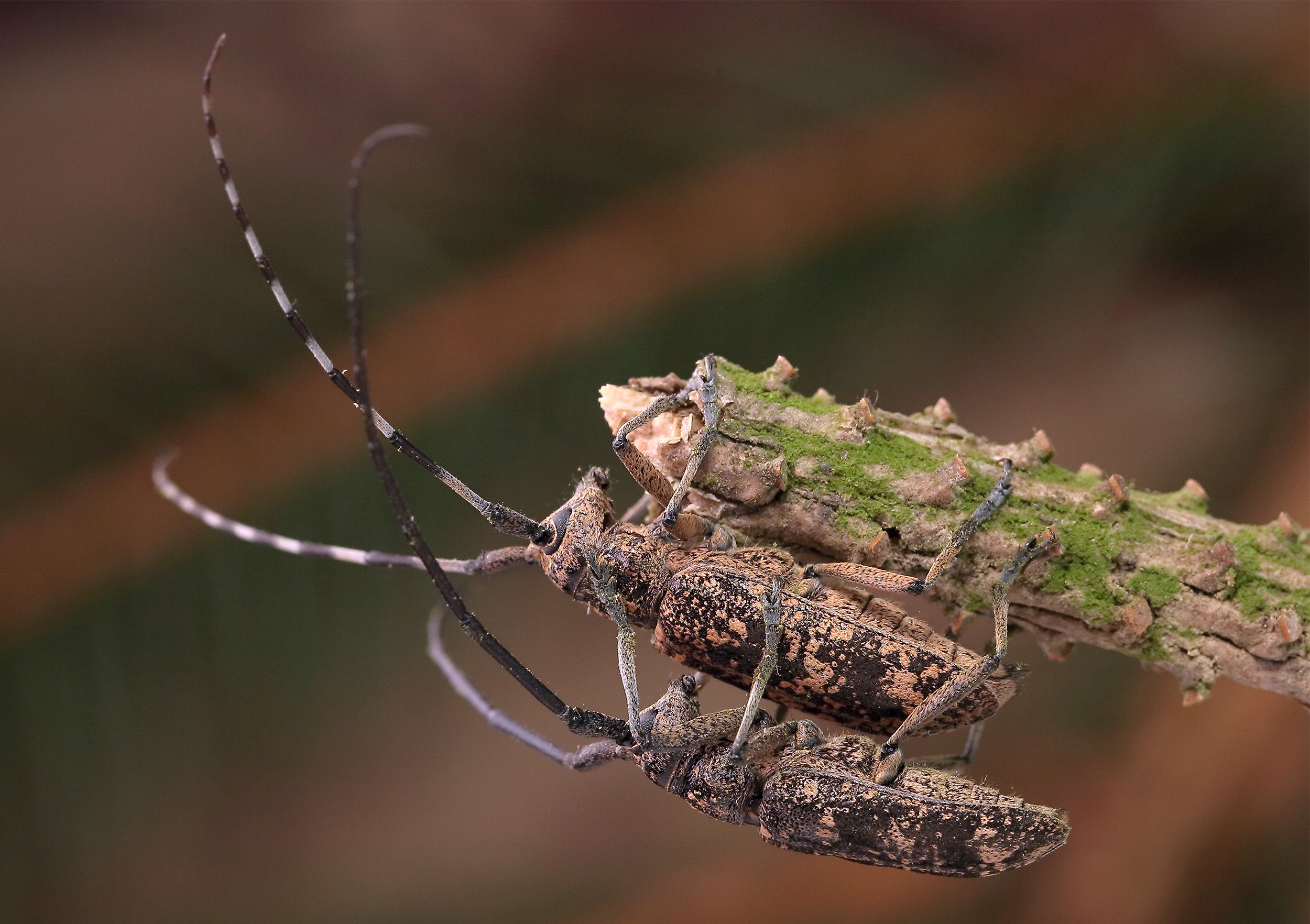
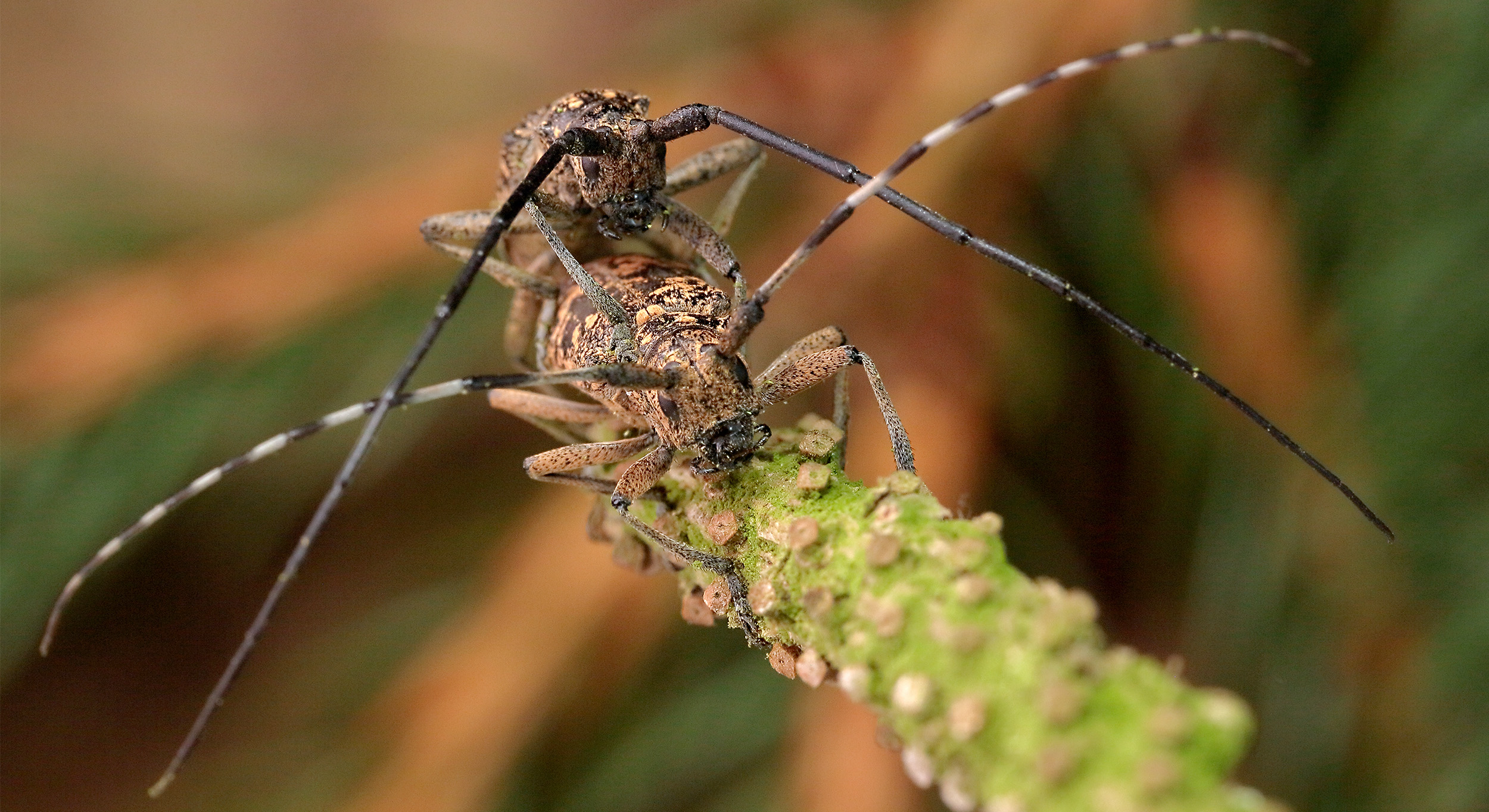
Monochamus (Monochamus) saltuarius occidentalis - couple [Photo © Milan Lovětínský]
| Subfamilia | Lamiinae Latreille, 1825 |
| Tribus | Monochamini Gistel, 1848 |
| Genus | Monochamus Dejean, 1821 |
| Subgenus | Monochamus Dejean, 1821 |
| Species | Monochamus (Monochamus) saltuarius (Gebler, 1830) |
| Species | Monochamus (Monochamus) saltuarius occidentalis Sláma, 2017 |
